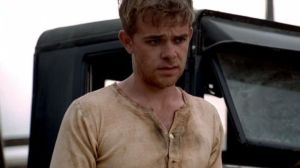Hot on the heels of the release of Fear Street Part 1: 1994, the follow-up film Fear Street Part 2: 1978 has the difficult task of not only continuing the groundwork of what came before it, but also of traveling to an earlier point in time in the mythos of Shadyside to help elucidate the overall storyline, as well as craft its own unique narrative. While the debut film could have easily only minimally set the stage for the directions of the trilogy, filmmaker Leigh Janiak clearly didn’t want to take the easy way out and went above and beyond what was necessary for a definite first part in a series, though this sophomore installment doesn’t quite as successfully navigate the ambitious narrative threads while also delivering a compelling standalone adventure. Despite the film’s overall lack of cohesion, its disparate elements all work well enough in their own right, with fans of the summer-camp slasher subgenre sure to take the most delight out of the middle chapter of the trilogy.
Videos by ComicBook.com
As our teen-aged heroes in 1994 seek help for their possessed friend, they collide with one of the only survivors of a similar tragedy (Gillian Jacobs) who recalls the horrifying events that unfolded at the nearby Camp Nightwing. During those unsettling experiences, we learn that an evil force has seemingly descended upon a counselor, only for campers and counselors alike to have to come together to find out what is really motivating the evil.
What is overtly evident about 1994 is that the tone and narrative lifted generously from the horror films of that era, which understandably led many audiences to assume that 1978 would follow a similar trajectory. Especially given films like Friday the 13th, The Burning, and Sleepaway Camp all being beloved by horror fans for their campground setting, it seemed like an obvious choice to deliver a straightforward, summer-themed slasher, only for Janiak to once again totally circumvent expectations.
Unfortunately, while we can appreciate the ways 1994 managed to deviate from the expected path, the overall narrative of 1978 isn’t entirely as effective.
From a tonal standpoint, 1978 manages to keep the momentum going with the balance of humor, horror, and era-appropriate soundtrack, making for an effective complement to what came before it. However, with the film having to retroactively set up the events of 1994, the mythology ends up being somewhat overwhelming while the exposition often detracts from the linear narrative.
Surely a filmmaker shouldn’t feel beholden to the expectations of an audience, nor should they feel forced to deliver on preconceived notions, with the success of 1994 and its gruesome kills priming viewers for 1978 to lean more fully into traditional slasher tropes. The sequel absolutely delivers some truly unsettling components, but as it’s effectively serving as an origin story for one of the killers in seen 1994, the effectiveness of the overall experience feels diluted. In a sense, the experience feels similar to going from a major Marvel Cinematic Universe team-up event to a more character-driven solo movie when you don’t have much of a connection to the main heroes in the first place.
This isn’t at all to say that 1978 isn’t without its merits, as it does a number of things quite well. Its ensemble grows much larger than what we saw in the debut film, with actors Sadie Sink and Emily Rudd being the standouts of the cast as a pair of squabbling sisters. The rest of the roster delivers the archetypes you’d expect from such a slasher, from the cranky counselors to the mysterious nurse to the nerdy “indoor kids.” Additionally, when it comes to the many killers we met in the first film, the “Camp Nightwing Killer” with his burlap-sack disguise and deadly power with an axe feels like it’s the birth of an all-new franchise in his own right, making one devastating blow after another to his unsuspecting victims.
Much like how 1994 started as what appeared to be an homage to Scream, only to then deviate from that concept in major ways, 1978 also starts as one thing and develops into something else entirely. The problem is that, not only is the film tasked with explaining what happened in the previous film and the entire supernatural nature of Shadyside, it also has to plant the seeds for the third film, all while attempting to tell its own unique story. Having to juggle these various narrative threads works against everything it’s trying to accomplish, leading to somewhat of a dropoff from the success of the previous film. Luckily, there’s still enough laughs and brutal kills to satiate most horror fans, regardless of how they felt about 1994, while also setting the stage for a fulfilling conclusion to the trilogy in Fear Street Part 3: 1666.
Rating: 3 out of 5
Fear Street Part 2: 1978 hits Netflix on July 9th.








